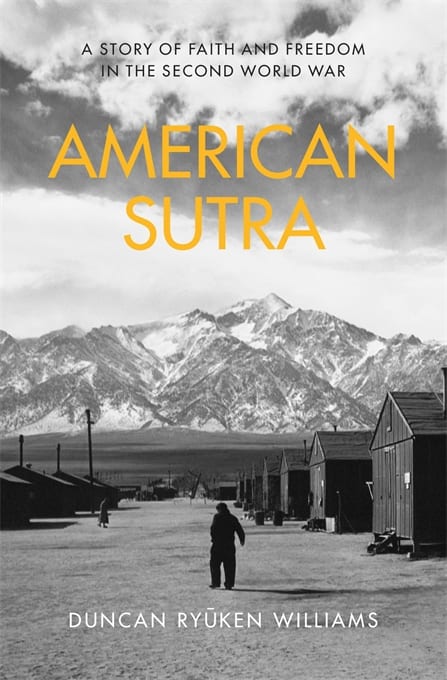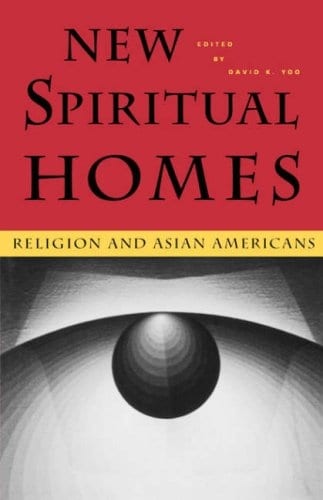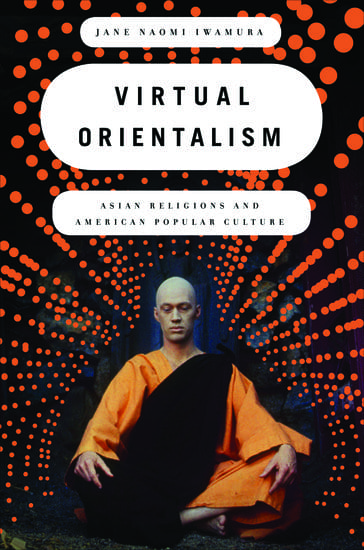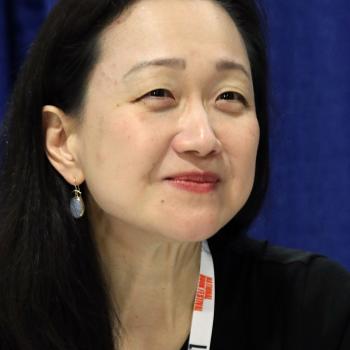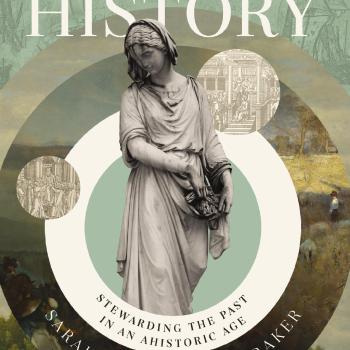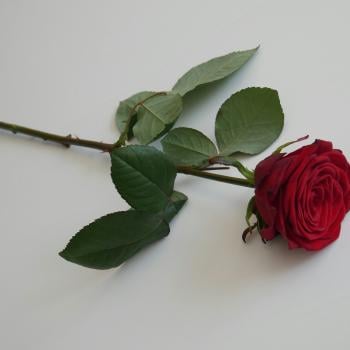May is Asian American and Pacific Islander Heritage Month, and in many ways, it has been a particularly somber one for Asian Americans. Tensions between the U.S. and China continue to rise, and Asian and Asian American people continue to be blamed for the coronavirus and targeted in an alarming number of hate incidents across the country.
And yet there is still reason to feel hope and possibility—even celebration—in this fraught moment. Earlier this month, PBS released its groundbreaking docu-series, Asian Americans, which covers the rich history of Asian American experiences with nuance, depth, and passion. This election cycle saw an unprecedented number of Asian Americans running for president, and Asian Americans are sharing their stories on stage, on screen, and on the page more than ever before.
In the field of American religious history, scholarly attention to Asian Americans has been shamefully limited—but fortunately that, too, is changing. The past couple decades have seen a proliferation of excellent interdisciplinary scholarship on Asian American religious life, aided by the creation of scholarly communities such as the Asian Pacific American Religions Research Initiative and the Asian North American Religion, Culture, and Society Unit in the American Academy of Religion. The research generated by these scholars has not only improved understanding of Asian American religious life, but challenged and changed how scholars understand American religion (and non-religion) more generally. (See, for example, my previous post about the book Family Sacrifices by Russell Jeung, Seanan Fong, and Helen Kim.)
In celebration of this scholarship, I gathered together several scholars of Asian American religion–Khyati Joshi, Jane Hong, Dusty Hoesly, and Jasleen Singh—and asked for their recommendations for books and articles that have shaped the field. If you’re considering adding Asian American perspectives to your summer reading and your fall syllabi—and I hope you will!—here’s where you can begin. Happy reading, and happy Asian American and Pacific Islander Heritage Month!
American Sutra: A Story of Faith and Freedom in the Second World War by Duncan Ryūken Williams
Khyati Joshi: “Writing my latest book, White Christian Privilege: The Illusion of Religious Equality in America (NYU Press, 2020), which reaches back centuries to map the influence of religion and race on U.S. culture and law, meant drawing upon myriad resources from many disciplines. Among those texts that most profoundly affected the writing of my book is Duncan Ryūken Williams’ American Sutra: A Story of Faith and Freedom in the Second World War (Harvard University Press, 2019). Throughout my writing process, Williams’ book offered both evidence and confidence. His evidence took the form of detailed and thoughtful narratives that weave together federal policy and its real-world impact on Japanese American Buddhists and Christians, illuminating the intricate threads that tie Whiteness, Christianity, and American national identity together. His thoughtful presentation of personal stories gave depth to his arguments, enabling the reader to connect deeply with the subject matter. American Sutra provided me the confidence to cover a broad sweep of history in White Christian Privilege, and to foreground the individual voices of both Christians and American religious minorities to show how, even while the law used ‘White’ as the standard for immigration and citizenship, it was Christianity that had the preeminent role in in shaping the very meaning of Whiteness. Any discussion of race and White supremacy in the United States that does not address religion and Christian supremacy is inherently incomplete, and Williams’ American Sutra does a beautiful job of presenting the two together in ways that both resonate and inform.”
Khyati Joshi, Ph.D., is Professor of Education at Fairleigh Dickinson University. Her research and scholarly work taps the experiences of South Asian Americans and other immigrant communities to illuminate race relations and inform interfaith work in the United States. She is an author of several books, including White Christian Privilege: The Illusion of Religious Equality in America (NYU Press, 2020), which will be released in July.
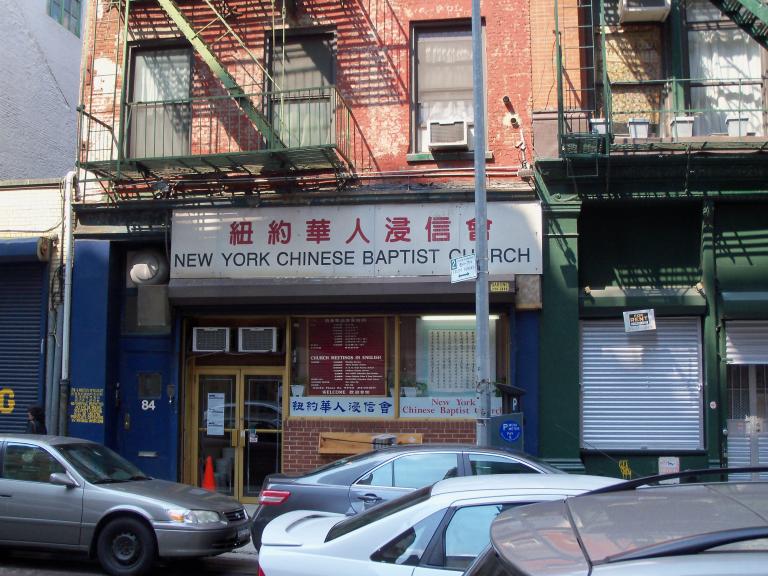
“Protestantism in Twentieth-Century Chinese America: The Impact of Transnationalism on the Chinese Diaspora,” The Journal of American-East Asian Relations 13, by Timothy Tseng
Jane Hong: “There’s a lot of excellent scholarship on Asian American Christianity, but most of it isn’t historical in nature. As someone writing a history of how post-1965 Asian immigration has changed (and is changing) U.S. evangelicalism, I found this article by church historian Tim Tseng to be a rare gem giving insight into why evangelicalism proved so attractive to Chinese American Christians after the 1960s. I appreciate how Tseng brings together a host of seemingly disparate developments—Cold War geopolitics, post-1965 Chinese immigration, the move among U.S. Christians from mainline to evangelical denominations, and post-civil rights backlash, to name a few—in a coherent and compelling way. And although he is writing about a half-century ago, you get a sense of how this history continues to inform the political conservatism of many Chinese American evangelicals today, lending nuance to our understanding of how race, religion, and politics intersect.”
Jane Hong, Ph.D., is Associate Professor of History at Occidental College and author of Opening the Gates to Asia: A Transpacific History of How America Repealed Asian Exclusion (University of North Carolina Press, 2019). Her current research uses the history of Asian American evangelicals as a lens to explore intersections of race, religion, and partisanship since the 1970s; her work on this topic can be found in the article, “In Search of a History of Asian American Evangelicals.” She appeared in the new PBS docuseries, Asian Americans, which was released this month.
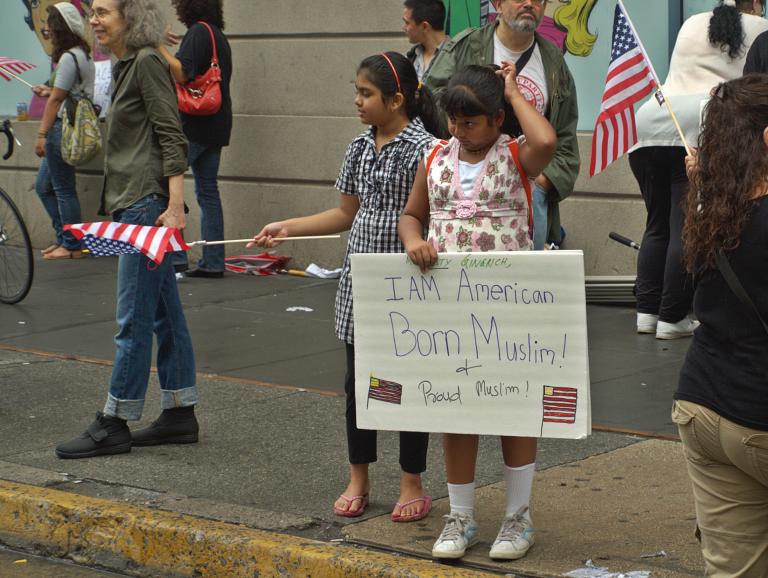
“The Racialization of Islam in American Law,” The Annals of the American Academy of Political and Social Science 637, by Neil Gotanda
Dusty Hoesly: “I want to highlight an article by an author whose work has influenced my research and teaching about the intersection of religion, law, race, and society, but whose work is not often cited by scholars of Asian American religions. Neil Gotanda, professor emeritus of constitutional law at Western State College of Law, is a legal scholar, civil rights activist, and co-founder of Critical Race Theory within the Critical Legal Studies movement. Gotanda has authored seminal works in what is now called Asian American Legal Studies. While Gotanda has not written much about religion, his article ‘The Racialization of Islam in American Law’ expertly places the trope of the ‘Muslim terrorist’ within a wider historical context of Asian American racialization. Using law as a lens to explore race and religion, Gotanda shows how the U.S. has long constructed Asian Americans as outsiders and subordinates, subjecting them to violence and exclusion.
“A key argument of this essay is that ‘Muslim’ is not only a religious category but also a racial one in which brown-skinned men with beards and turbans or women with headscarves are seen as Muslims, regardless of their religion or origins. Gotanda characteristically connects themes across time and race. After defining racialization as ‘the inscription of an ascribed subordination on a raced body linked to a racial category’ (187), he uses legal cases to show the history of Asian American discriminatory treatment and harmful stereotypes as perpetual foreigners and model minorities. Gotanda links Muslims and Muslim Americans to this history of racialization and subordination. The introduction and conclusion broaden the comparisons further, as Gotanda ties doubts about President Obama’s religion and citizenship to nativist racial campaigns against immigrants and Muslims. The article’s short length belies its depth and breadth. In a brief twelve pages, Gotanda brings together the social construction of race, the racialization of religion, national identity, Asian American legal history, stereotypes of Asian Americans, ‘bad Muslim’ and ‘good Muslim’ stereotypes, the experiences of Muslim Americans post-9/11, and the ‘birther’ movement.
“I have taught this article in several courses, particularly in my Race, Law, and Asian American Religions seminar, because Gotanda’s work powerfully shows us how law delimits the bounds of racial, religious, and national belonging. It also points a way forward for scholars to incorporate comparative racial and religious encounters with state institutions that shape the conditions under which American religious lives are negotiated and contested.”
Dusty Hoesly, Ph.D., is a Visiting Assistant Professor at the University of Southern Mississippi. He focuses on North American religions and the qualitative social scientific study of religion, specializing in how minority religions and nonreligious movements shape modern American culture. He has published work on the Universal Life Church and contemporary American weddings, varieties of American secularism and spirituality, organic foods in new religious movements, biodiversity and spiritual wellbeing, Caribbean religions, and religion in the American West.
New Spiritual Homes: Religion and Asian Americans, edited by David Yoo
Jasleen Singh: “I have enjoyed the essays in David Yoo‘s anthology, New Spiritual Homes: Religion and Asian Americans (University of Hawaii Press, 1999) as they have greatly contributed to scholarship around Asian American experience of race and religion in the United States. Some of the essays in this anthology are particularly useful in complicating our understanding of religion.
“Vinay Lal’s essay ‘Sikh Kirpan in California Schools: The Social Construction of Symbols, the Cultural Politics of Identity, and the limits of Multiculturalism,’ was especially useful to me as I tried to understand how Sikhs navigated the complex social terrain of American liberal multiculturalism. Lal’s essay closely examined a controversial 1994 California court ruling that denied the Sikh school children the right to wear their kirpan, or dagger, as an expression of their religious freedom. The Sikh principle of wearing a kirpan in public challenged both the legal and social limits to what constituted ‘religious’ belief in a secular modern society. The very act of possessing a kirpan that looked like (and could very well act) like a dagger was read outside the frame of ‘proper’ religion. Lal’s analysis of the case helped me understand how the kirpan surely offered multiple meanings to the Sikh community before it was forced to conform to a specific cultural and linguistic (liberal secular) logic of the state. And while the kirpan refused to be neatly categorized as a weapon or a benign ‘object of faith’– as part of secular modes of thought– the California court case made us aware of the multiple concessions Sikhs had to make in order to make it permissible within the American public as part of a religious ‘article of faith.’ The case, therefore, highlighted the powerplay between Sikh-American cultural practices and America’s liberal secular democracy, which is shaped by protestant philosophy, that leaves diverse forms of Asian American cultural practices at a loss of translation.”
Jasleen Singh is a doctoral candidate in American Culture at the University of Michigan. A specialist in Asian/Pacific Islander American Studies, she investigates political activism, gender and sexuality, and community development in the Sikh diaspora. Her research on this subject can be found in the article “Desire, Patriotism, and Sikh Subjectivity.”
Virtual Orientalism: Asian Religions and American Popular Culture by Jane Iwamura
Melissa Borja: “From the self-transformation reality show Tidying up with Marie Kondo to Mindy Kaling’s teen sit-com Never Have I Ever, American television shows are paying attention to Asian/Asian American spirituality and religious life more than ever before. In some ways, these new representations of Hinduism, Shintoism, and other forms of Asian/Asian American belief and practice are a refreshing departure from media portrayals of the past. We see, for example, more stories centered on women and second-generation Asian Americans, and the inclusion of a complex cast of characters offers a more nuanced portrait of Asian American religious life is dynamic and internally diverse. At the same time, though, old (and questionable) orientalist tropes continue to shape these new narratives, and some historical perspective is necessary to appreciate just how far we’ve come—and still need to go.
“Virtual Orientalism: Asian Religions and American Popular Culture (Oxford University Press, 2011), written by religious studies scholar Jane Iwamura, is a necessary companion for making sense of the long history of how American popular culture has romanticized Asian religions and religious people. Exploring the appeal of figures such as Charlie Chan, D. T. Suzuki, Deepak Chopra, and the Dalai Lama, Iwamura investigates the enduring narrative of East-meets-West spiritual encounter, in which the ‘Oriental Monk’—which she defines as ‘the representative of an otherworldly (though perhaps not entirely alien) spirituality that draws from the ancient wellsprings of ‘Eastern’ civilization and culture’—transforms the lives of Westerners in search of enlightenment.
“Virtual Orientalism is a useful text for both research and teaching for several reasons. For one, the book reveals the enduring fascination that American audiences have with Asia. This fascination is not innocent; as Iwamura shows, the Oriental Monk icon has served to reinforce longstanding orientalist ideas and unequal relations of power. Moreover, understanding Oriental Monk figures in American popular culture matters enormously because they have provided many Americans with their first encounter with Asian spirituality. Unfortunately, this trop has also produced a rather problematic understanding of Asian religious life. Ultimately, Virtual Orientalism reminds us of the stakes of representation of religion in film, television, and music: the need to not only have diverse religious people on television and film, but to represent those diverse religious people with care, sensitivity, and attention to broader political and cultural contexts.”
Melissa Borja, Ph.D., is Assistant Professor of American Culture at the University of Michigan, where she is core faculty in Asian/Pacific Islander American Studies. Previously at the Anxious Bench, she wrote about Marie Kondo as an Oriental Monk figure.



